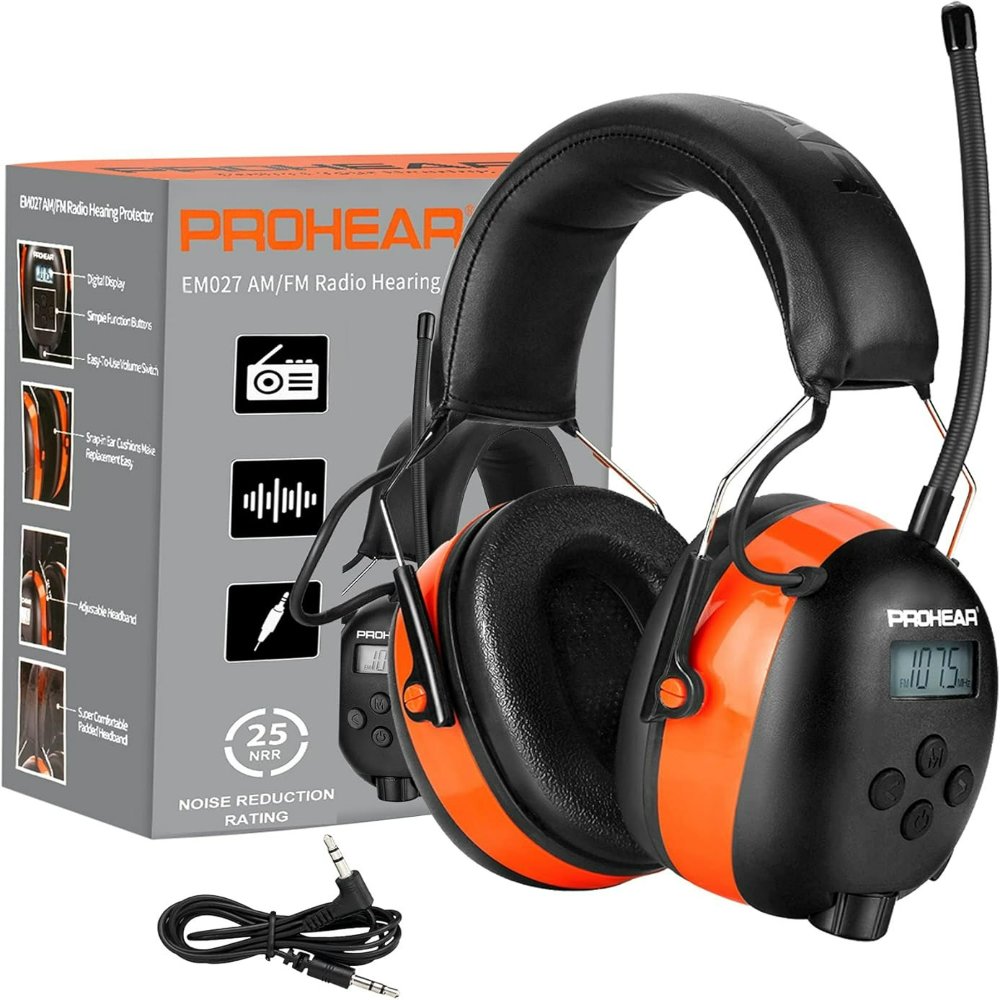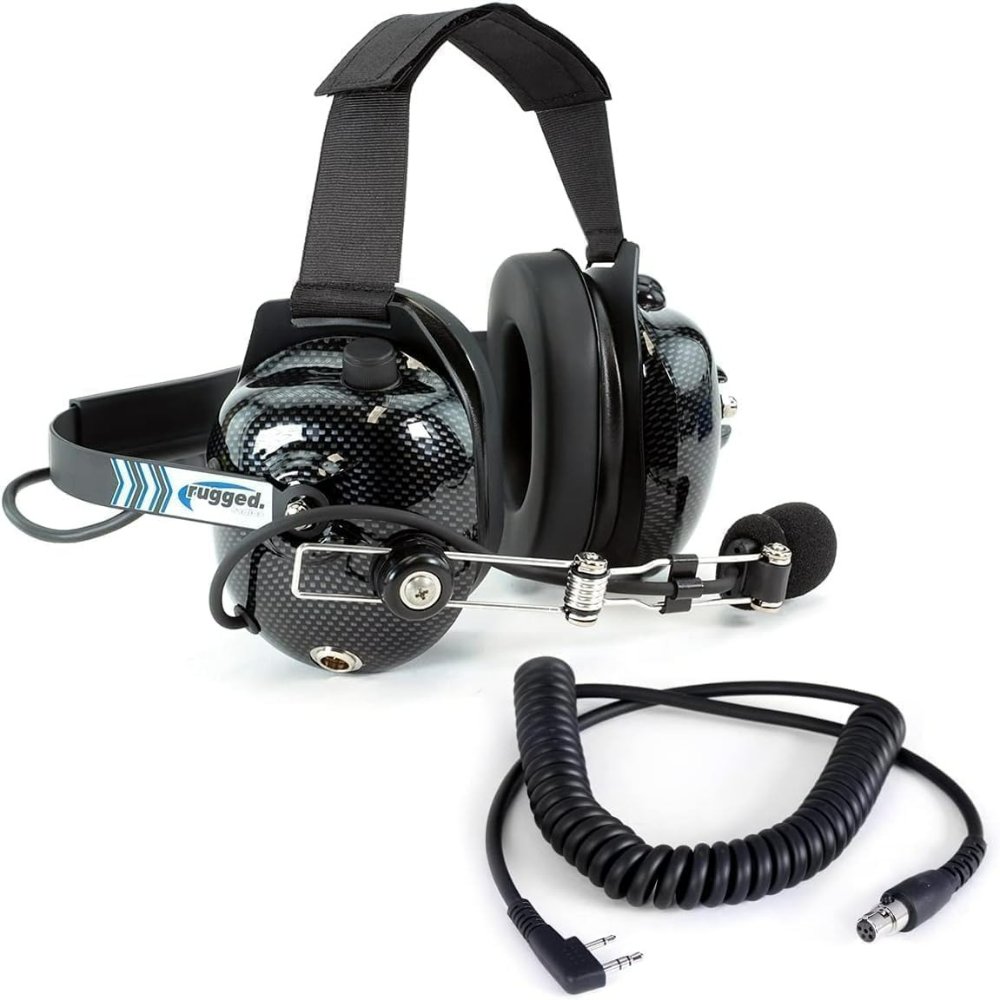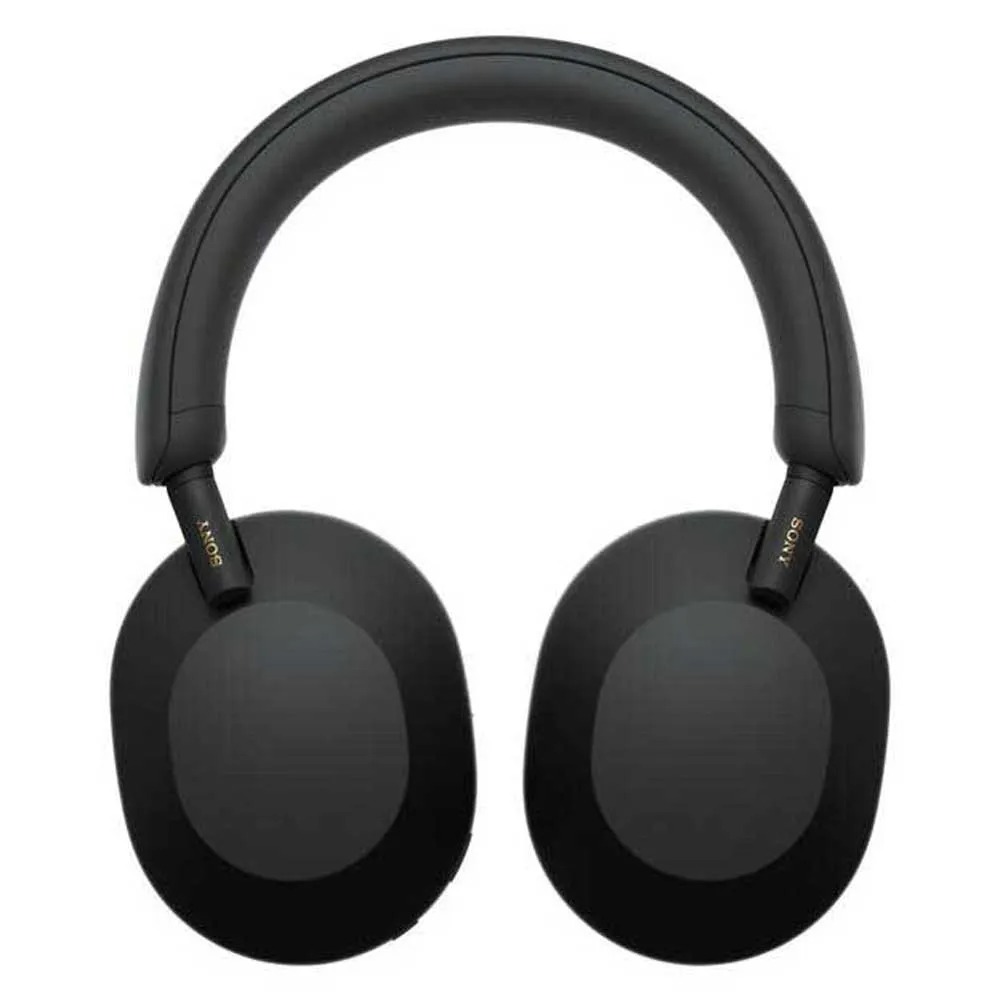The Origins of Radio Headsets and Their Evolution
The journey of radio headsets began nearly a century ago. Early versions were bulky and wired, limiting mobility. In war and aviation, these devices proved crucial. They allowed clear communication over background noise. Yet, they were far from the sleek devices we use today.
The evolution of radio headsets has seen dramatic transformations. Vacuum tubes, once essential, gave way to transistor-based designs. This change reduced the size and weight significantly. By the late 20th century, radio headsets had become more versatile. This versatility spread their use beyond specialized fields into everyday life.
Advances in materials and electronics further refined radio headsets. They shrank even more and started to offer better sound quality and comfort. Durability also improved. This led to widespread use in various industries, from construction to entertainment.
The digital era marked a turning point for radio headset evolution. Digital signal processing (DSP) technologies emerged. They enhanced audio clarity and offered innovative features like voice commands. The integration of advanced circuitry opened doors to multifunctional radio headsets. They now support a wide range of communication needs.
Today, radio headsets are not just about communication. They are style statements and tech symbols. They have adapted to the fast-paced technological world with speed and sophistication. Designers focus both on functionality and on consumer appeal, ensuring radio headsets evolve with both time and taste.

Advancements in Radio Headset Technology by 2025
By the year 2025, radio headsets have witnessed groundbreaking advancements. They have embraced cutting-edge technologies, leading to remarkable changes in their design, functionality, and user experience. These advancements are not just incremental; they represent a leap forward in the field of personal communication devices.
Enhanced Connectivity Options
Radio headsets now offer a range of connectivity choices. They support various frequencies and standards. Users switch seamlessly between communication channels. This versatility ensures uninterrupted service, regardless of location.
Extended Battery Life and Efficiency
New battery technologies have emerged. They offer longer life and higher efficiency. Radio headset users enjoy extended use without frequent recharging. Sustainable power solutions are also in play, reducing environmental impact.
Improved Wearability and Ergonomics
Designers have prioritized comfort and usability. Modern radio headsets are lightweight and contoured for the human head. Advanced materials provide durability without adding extra weight. Users wear them for long periods without discomfort.
Advanced Voice Assistance
Voice assistants are integrated deeply into radio headsets. They now understand more languages and accents. The assistants help users control their devices hands-free. They also provide valuable information and support on demand.
Customizable Audio Profiles
Radio headsets now adapt to personal hearing preferences. They feature customizable audio profiles. These profiles adjust to various environments. Users experience optimal sound in noisy or quiet settings. The devices cater to needs ranging from casual listening to critical communications.
In summary, the landscape for radio headsets by 2025 is transformative. They have become smarter, more connected, and user-friendly. Manufacturers continue to innovate, keeping pace with technological progress and consumer expectations.
The Impact of Wireless Communication on Radio Headsets
The advent of wireless communication has revolutionized radio headsets. It’s reshaped their design, functionality, and user interactions. This section explores the key ways in which wireless tech has influenced the evolution of radio headsets.
- Cordless Freedom: Gone are the days of tangled wires. Radio headsets now offer cordless mobility, enabling users to move freely without restraints, enhancing productivity and comfort.
- Ease of Pairing: Connecting to devices has never been simpler. Radio headsets pair effortlessly with various gadgets through wireless protocols, making the setup process smooth and user-friendly.
- Data Transmission: Wireless communication allows for the transfer of not just audio but data as well. This has provided new dimensions to radio headsets, like the transmission of sensor data, that opens the door for innovative applications.
- Interference Reduction: Advancements in wireless tech have led to decreased interference. Radio headsets maintain clear communication even in environments with multiple competing signals.
- Unified Communication: The integration of wireless technology has led to unified communication systems. Users now connect to various platforms with a single headset. This simplifies workflow and reduces the need for multiple devices.
The leap to wireless has been pivotal for radio headsets. It has led to advancements that have not only improved the user’s quality of life but also expanded the capabilities and roles of radio headsets in both personal and professional settings. As we move forward, wireless technology continues to be a driving force in the innovation and versatility of radio headsets.

Bluetooth Integration and Smart Features in Modern Radio Headsets
The arrival of Bluetooth technology has been a game changer for modern radio headsets. Gone are the days of incompatible connections and complex setup procedures. Radio headsets today facilitate quick pairing with a multitude of devices, thanks to Bluetooth’s simplicity and wide adoption. With just a few taps, users can sync their headsets to smartphones, tablets, and other Bluetooth-enabled devices, making the exchange of audio seamless and hassle-free. This ease of connectivity augments the versatility of radio headsets, enabling them to become an everyday accessory for a multitude of tasks.
Smart features further enrich the experience of using radio headsets. Many models come equipped with a suite of capabilities that enhance user interaction and convenience. Voice control is one such feature that stands out, allowing users to command their headsets to perform various tasks, such as making calls or playing music, without ever having to handle their connected devices. Gesture control is also becoming more prevalent, letting users control their headsets with simple movements, which can be especially handy when their hands are busy or dirty.
Not just limited to audio, modern radio headsets now often come with apps that offer detailed customization. Users can tweak equalizer settings, manage battery levels, and control noise-canceling features, all from their smartphones. These apps are constantly updated, providing new features and ensuring the headsets remain up-to-date with the latest technology advancements.
In essence, Bluetooth integration and smart features have made radio headsets more intuitive, personalized, and efficient. They not only cater to high-quality audio needs but also serve as an extension of the user’s smart ecosystem, seamlessly integrating into the fabric of daily life and providing functionality that goes beyond traditional expectations.
Noise-Canceling Capabilities and Sound Quality Enhancements
In 2025, radio headsets have gained a significant boost in sound quality. Noise-canceling technology has reached new heights. It now offers a pristine listening experience, even in noisy environments. Users witness a marked reduction in unwanted sounds. This technology uses advanced algorithms to analyze and block out ambient noise.
The sound quality of radio headsets has also seen notable enhancements. High fidelity audio is now standard, providing clear and vibrant soundscapes. The improved audio drivers and sophisticated equalization techniques have contributed largely. These innovations deliver rich bass and crisp treble. Users enjoy a more immersive and authentic sound experience.
Furthermore, the adaptive sound control features have been perfected. They adjust headset settings based on the user’s surroundings automatically. For instance, volume levels tailor to ambient noise while features like wind reduction kick in outdoors. This ensures optimal performance wherever the user may be.
Manufacturers have also focused on the integration of high-quality microphones. These mics ensure that voice communications are not just loud, but crisp and clear. They enhance call quality, essential for both personal and professional interactions. By prioritizing these sound enhancements, radio headsets have become more adept. They cater to a wider array of activities, from music enjoyment to critical communications.
In short, the advancements in noise-canceling tech and sound quality have transformed radio headsets. They deliver an unparalleled audio experience that users in 2025 have come to expect as standard.

The Use of Radio Headsets in Professional Environments
Radio headsets have become vital in various professional settings by 2025. Workplaces value them for their wireless convenience and sound quality. They aid employees in maintaining clear communication even in noisy or demanding environments.
In sectors like construction, robust radio headsets withstand harsh conditions. They offer noise-canceling features, ensuring critical commands are heard. In customer service, clear voice transmissions via advanced microphones improve interactions.
Aviation professionals rely on radio headsets for safe operations. They ensure pilots stay connected with ground control without interruption. Similarly, in event management, staff coordinate seamlessly over distances. This ensures the smooth flow of events.
Security forces benefit from the discreet and secure communication channels. Enhanced connectivity safeguards sensitive information from eavesdropping. Moreover, in healthcare, radio headsets offer hands-free communication. This is crucial in sterile environments where touch-free operations are necessary.
Furthermore, the integration of voice assistants in radio headsets supports multitasking. Professionals issue voice commands, leaving their hands free for other tasks. Customizable audio profiles also cater to the user’s hearing needs. This maximizes effectiveness in different settings.
Radio headsets blend into the professional landscape as essential tools. They support productivity and efficiency across industries. The importance of high-performance radio headsets in professional spheres is undeniable. They represent a shift towards better workflow integration and communication excellence.
Consumer Preferences and Market Trends for Radio Headsets in 2025
The year 2025 has seen clear trends in consumer preferences for radio headsets. Users look for devices that blend high-tech functionality with sleek aesthetics. The market reflects these demands, constantly adapting to satisfy varied tastes and uses.
- Design and Style: Consumers often choose radio headsets that sport modern and stylish designs. They prefer slim profiles and a variety of color options that express individuality.
- Ease of Use: Simplicity is key. Users favor headsets that offer straightforward functionality and easy-to-use controls. Hassle-free operation is a top priority.
- Durability and Build Quality: High-quality materials are in demand. Customers expect radio headsets that resist wear and tear, even with daily use.
- High-Tech Features: Smart features like AI integration and gesture controls are popular. Buyers seek headsets that provide cutting-edge technology.
- Health and Comfort: With many wearing headsets for hours, comfort is crucial. Soft ear pads and lightweight materials make for a better fit.
- Environmental Impact: Eco-friendly radio headsets gain traction. Consumers are more conscious of their carbon footprint and opt for sustainable choices.
- Customer Service and Support: Excellent after-sales support strengthens brand loyalty. Shoppers prefer brands that offer reliable warranties and responsive help desks.
The market has noted these trends and is shaping products accordingly. Manufacturers push to innovate, ensuring the radio headsets not only perform well but also align with user preferences. As tastes evolve, so will the offerings in the radio headset landscape, always aiming to meet the user’s evolving demands.
The Future Outlook: Innovations and Developments Beyond 2025
Looking ahead, the potential for radio headsets extends far beyond 2025. Innovations in technology foresee even smarter, more adaptive devices. We stand on the brink of several exciting developments.
- Integration of Augmented Reality: Future radio headsets could merge the physical and digital worlds. Users might see information overlaid onto their real-world view.
- Brain-Computer Interface: Advances might allow users to control their radio headsets using just their thoughts. This would bring new levels of convenience and accessibility.
- Advanced Biometric Sensors: Upcoming models could monitor vital signs. This would make them valuable tools for health and fitness tracking.
- More Eco-Friendly Options: Manufacturers aim to reduce their environmental impact. We expect to see a rise in biodegradable materials and renewable energy-powered devices.
- 5G and Beyond: The rollout of 5G networks will usher in faster connection speeds. Future radio headsets may benefit from near-instantaneous data transfer, enhancing real-time communication.
- Emerging Markets and Applications: New industries and hobbies might adopt radio headsets. These devices could see use in virtual meetings, gaming, and even space travel.
As technologies evolve, so will consumer expectations. Radio headsets must keep pace with advancing tech trends. They must cater to a growing range of needs and preferences. The journey of innovation continues. It promises to bring breakthroughs that we can barely imagine today.